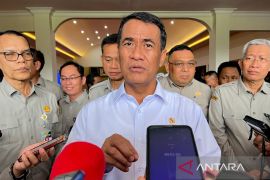"Actually, the point is acceleration. Each day, only 40 units of the house are produced. I call on the staff to increase the number to 300 (units) each day, so that we can complete it in six months," Kalla told reporters at the Vice President`s Office on Tuesday.
The series of earthquakes that struck Lombok on July 29 damaged 167 thousand housing units; 1,194 schools; 321 health facilities; and 1,091 houses of worship, according to data from the National Disaster Management Agency (BNPB).
Funds that have been budgeted by the Government, through the APBN for the reconstruction of Lombok, reach Rp1 trillion, and according to the vice president, the figure is still increasing as needed.
"The funds disbursed have reached Rp1 trillion and there is still a need for more funds. But construction has begun, and it requires acceleration," Kalla explained.
Kalla, as the Disaster Management Commander, hopes that post-disaster reconstruction and rehabilitation in Lombok can be completed by March 2019, six months faster than the previous target, which is one year since the earthquake occurred, or in July 2019.
Community health and safety are a concern, because there are limits on how people can live and move in refugee camps. According to the vice president, if people live in refugee camps for more than six months, it might lead to health problems and social problems.
"The Regional Government and all parties involved must make a time schedule and set targets to complete it. "It is expected to be completed by March 2019, so that people can return to occupy their respective homes," he added.
The need for production of earthquake-resistant home applicators must also be recalculated, so that the amount of production can be adjusted.
In addition, the involvement of technical students must also be maximized to accelerate the construction of new housing for the community.
Reporting byFransiska Ninditya
Editing by Eliswan Azly, Sri Haryati
Reporter: Antara
Editor: Suharto
Copyright © ANTARA 2018












